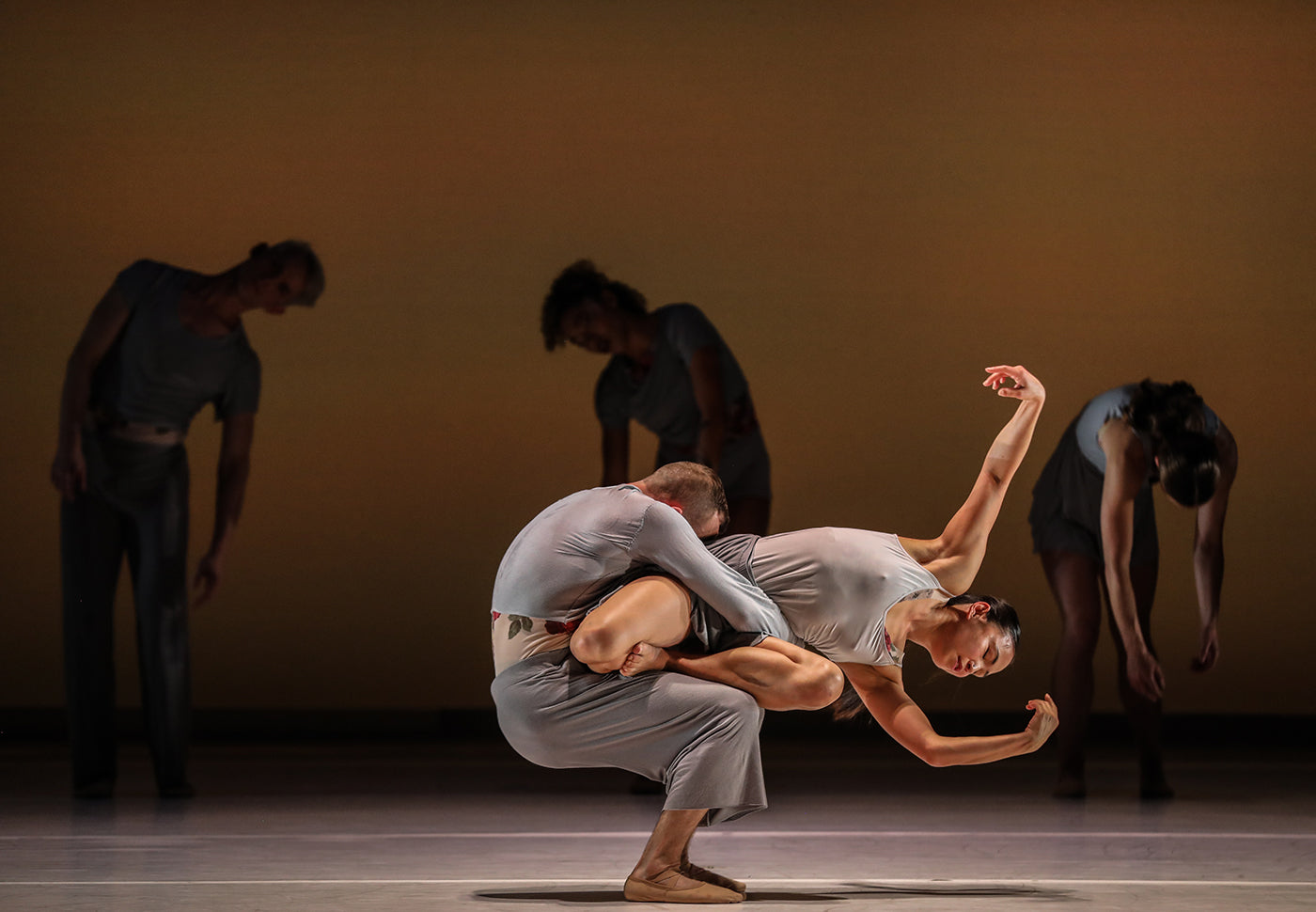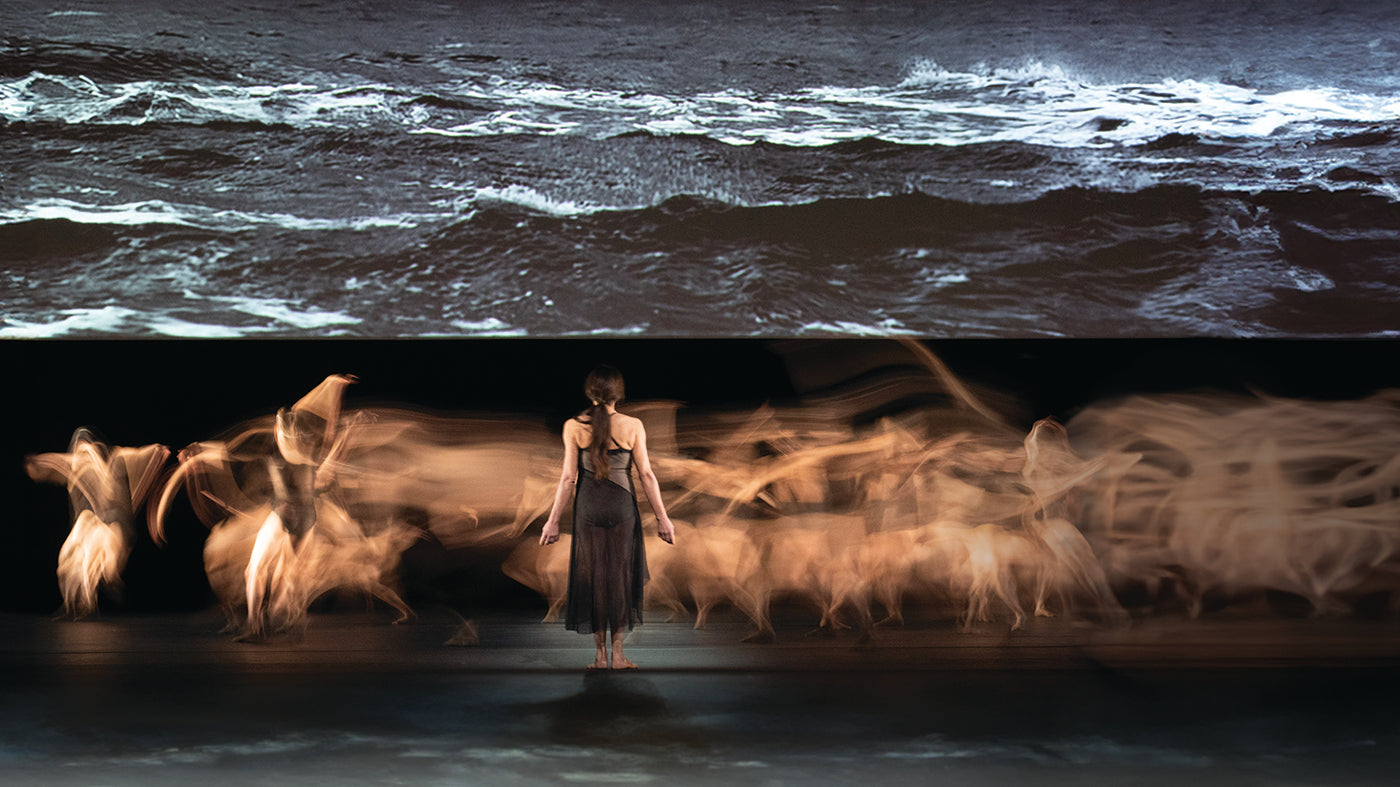In the upstairs studio
of Melbourne’s Dancehouse, the windows appear a luminescence of Mark Rothko
paintings. I may have come indoors, but the glow of outside is still making
itself known. The vibration is fitting as tonight Belgian-Genevan choreographer
Cindy Van Acker is presenting a collection of four solos: II, III, and V, from
ongoing project “Shadowpieces,” and an excerpt
from “Knusa/Insert Coins” (2016) to be performed by herself.
Matthieu Chayrigues, whose repertoire includes pieces by William Forsythe, Merce Cunningham, Trisha Brown, Twyla Tharp, and Van Acker, creates the sensation of slowly, beautifully, absorbing the pink fire of dusk. The sky is now dark and it feels as though all eyes are fixed on him. Just as Elaine de Kooning wrote of the tension within a painting by Rothko residing “in its ominous, pervasive light—that of a sky before a hurricane,” Chayrigues becomes a series of “imperceptible shifts from one pure colour to another [creating] a sense of atmospheric pressure.” As he carefully transfers his weight, so as not to disturb the atmospheric pressure and draw too sharp a line in the pigment, he becomes the incarnation of Morton Feldman’s “Rothko Chapel.” The world drifts away and the effect is sublime.
Things remain in an altered state as Stéphanie Bayle, who has worked with Van Acker in her company Greffe since 2012, begins her solo. Bayle’s colour: the sound of a piece of folded parchment in her pocket. She reads it to herself, assumes its content with a feather-light whisper, and folds the paper, returning it to the safety of her pocket. Bayle’s form becomes sound; it is almost as though the sound of the paper is the sound of the body. From the imperceptible colour shifts of the first solo, now, a balance between the distinct and the indistinct, the audible and the inaudible. Van Acker’s choreography, as described by Enrico Pitozzi, appears “to be thought out so [the dancer] can step over the limits of the body and consequently deconstruct [their] figure.” Become a blush of colour, a crease in a piece of paper, in choreographic compositions that “rotate around certain operative notions: these being the investigation into weight and its dynamics, the flow of movement and its suspension, as well as the relationship between these three components and the notion of time and space.” To my delight, Bayle and Chayrigues not just show, but amaze in their ability to make one part of their form vibrate as another remains still. And this control of the flow and suspension of movement is within the third solo presented from “Shadowpieces” by and for Laure Lescoffy.
Lescoffy sweeps aside any resistance I had in leaving behind the previous solos.
Lescoffy is waiting for us in the downstairs space of the dark Sylvia Staehli Theatre. She is, as Gilles Deleuze wrote, making “the body a power that is not reduced to the body. [Making] thought a power that is not reduced to consciousness.” Like a series of short stories or a collection of poems, Lescoffy sweeps aside any resistance I had in leaving behind the previous solos. Bayle, Chayrigues, and Lescoffy own their solos, and I lose track of time in the immersion process. It is not dissimilar to what Van Acker describes as “to experience putting all our attention on how a sound hits us, what it triggers, where it echoes. To actively observe how we can receive the music as a receptacle and then emit in our turn.” Each dancer, working with Van Acker, chose their music, and each solo was born from “an ‘active ingredient,’ which underlies the writing of the solo.”
Van Acker takes to the stage to perform her meticulous and powerful response to the Sin City photographs of Christian Lutz. To me, her repeated movements seek to remove the varnish of illusion and to reveal the tarnished excess and sadness of Las Vegas. As her right arm hammers back and forth, seemingly independent of her wishes, she draws for me a poker machine, the embodiment of “Insert Coins” here: you win, you lose, you always lose. In her segmented movements, in response to the loneliness and alienation that lies beneath Lutz’s images, “the density of a body,” as Van Acker describes, violently shakes.
Standing at the foot of the stage, with brevity, directness, and controlled force, Van Acker, in her own words on the process of making this piece, “explodes the understanding, pierces the codes, shows the urgency to survive, defies humanity. Encounter, embrace of all elements. After this immersion, I surface….”









comments